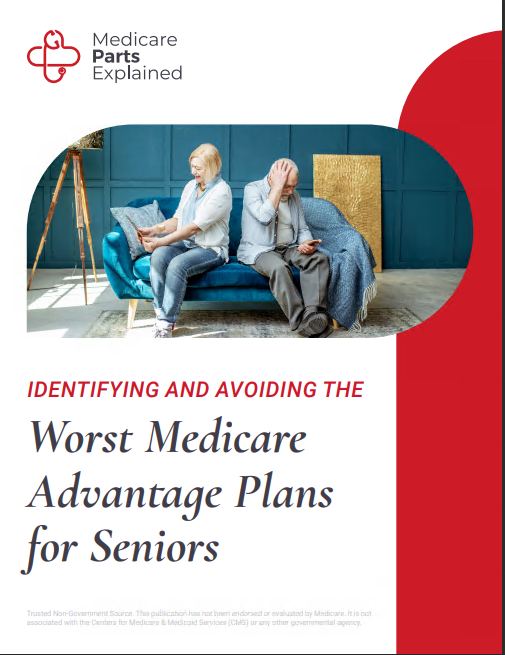Key Takeaways:
- Medicare Advantage can offer lower upfront costs, but you’ll need to consider co-pays, deductibles, and network restrictions that might add up over time.
- Medigap provides broader coverage with predictable out-of-pocket expenses, but premiums tend to be higher than Medicare Advantage plans.
What Are Medigap and Medicare Advantage?
Let’s kick things off with a clear understanding of what these two options are. Medigap, also known as Medicare Supplement Insurance, helps cover the “gaps” in Original Medicare (Parts A and B). Things like coinsurance, copayments, and deductibles—basically, those costs that would normally come out of your pocket.
On the other hand, Medicare Advantage (Part C) is an all-in-one alternative to Original Medicare. It includes Medicare Part A (hospital insurance) and Part B (medical insurance), and it usually bundles in extras like dental, vision, and sometimes even prescription drug coverage. Sounds tempting, right? But as they say, “There’s no such thing as a free lunch.” You’re usually dealing with managed care networks (like HMOs or PPOs), meaning you’ll have to stick to certain doctors and hospitals, and you’ll have copays and coinsurance for most services.
Now that we’ve got the basics down, let’s dive into which option might actually save you more money.
Upfront vs. Long-Term Costs
When comparing Medigap and Medicare Advantage, the first thing most people notice is the difference in premiums. Medicare Advantage plans tend to have lower monthly premiums (although other costs apply). Medigap, on the other hand, comes with higher monthly premiums right off the bat.
So, Medicare Advantage seems like the clear winner, right? Well, not so fast. That’s just the upfront cost.
With Medicare Advantage, while you might enjoy lower premiums, you’re also going to have copays for doctor visits, hospital stays, and other services, as well as deductibles to meet. And if you find yourself needing specialized care or more frequent visits, these can quickly add up. You’ll also need to stay within your plan’s network to avoid higher charges, which can be limiting depending on where you live or the type of specialists you need to see.
Medigap, on the other hand, provides much more predictable costs. Once you pay your premium, most of your other out-of-pocket costs are covered. You can see any doctor who accepts Medicare, without worrying about networks or surprise copays. That stability can be a huge relief for people who want to avoid the risk of unexpected bills down the road. The trade-off? You pay more each month, but you get peace of mind knowing that your costs are under control.
The Hidden Costs of Medicare Advantage
Many people are drawn to Medicare Advantage because of the lower premiums and added benefits, but what they don’t always consider are the hidden costs. One of the most significant is the out-of-pocket maximum, which can be thousands of dollars each year. While this cap exists to protect you from catastrophic expenses, reaching that limit isn’t out of the realm of possibility, especially if you need frequent medical care.
Prescription drug coverage is another thing to keep an eye on. Some Medicare Advantage plans include drug coverage (Part D), but you might face higher out-of-pocket costs for your prescriptions compared to a standalone Medicare Part D plan or a Medigap plan with separate drug coverage. Those medication costs can sneak up on you, particularly if you take brand-name drugs or need medications that fall into higher tiers.
Flexibility: Which One Lets You Choose?
A major difference between Medigap and Medicare Advantage is the freedom to choose your healthcare providers.
With Medigap, as long as a doctor or hospital accepts Medicare, you’re good to go. No need to worry about whether they’re in your network or not. This is especially valuable if you travel frequently or if you want the flexibility to see specialists without jumping through hoops. Imagine being able to just go to the doctor you trust without needing to double-check if they’re in some limited network!
In contrast, Medicare Advantage plans usually operate within networks of doctors and hospitals. If you go outside that network, you could end up paying more—sometimes a lot more. In some cases, your plan might not cover any costs at all for out-of-network care, except in emergencies. If you don’t mind sticking to a list of approved doctors and healthcare facilities, this might not be a big deal. But if you value the freedom to choose, Medigap might be a better fit.
Out-of-Pocket Caps: Safety Net or Illusion?
Both Medigap and Medicare Advantage have mechanisms to limit how much you spend, but they work very differently. Medicare Advantage plans come with an out-of-pocket maximum, which is supposed to protect you from spending too much in a year. But, this cap can be quite high, often running into several thousand dollars. Once you hit the limit, the plan covers the rest, but getting to that point might mean you’ve already paid quite a bit.
Medigap, on the other hand, doesn’t have an annual cap because it doesn’t need one. Most of your costs are already covered once you pay your premium. There are no surprise medical bills creeping up on you. That level of predictability can feel like a safety net, even if you don’t have an official out-of-pocket maximum.
Emergency and Travel Coverage: Do You Really Need It?
For those who travel outside the U.S. or split their time between different states, this is a huge factor to consider. Medigap policies often include some foreign travel emergency coverage, which can be a lifesaver if you’re the jet-setting type. Medicare Advantage plans? Not so much. While some might offer limited emergency coverage abroad, it’s often pretty skimpy.
Domestically, Medigap also gives you nationwide coverage. As long as the provider accepts Medicare, you’re set. If you’re in a Medicare Advantage plan, you might find that your coverage doesn’t travel with you. Some plans only provide emergency coverage when you’re out of the service area, which could become a real hassle if you spend a lot of time away from home.
Prescription Drug Coverage: What’s the Deal?
It’s important to note that Medigap plans don’t include prescription drug coverage. So, if you go the Medigap route, you’ll need to pick up a separate Part D plan for your medications. While this does add another layer of decision-making and cost, it can actually work in your favor because you have the flexibility to choose the drug plan that best fits your needs.
Medicare Advantage plans often bundle drug coverage into the plan, but this isn’t always the most cost-effective option, especially if you take medications that are pricey or aren’t well-covered by the plan. It’s crucial to look at the formularies (the list of covered drugs) to see what your costs will be.
Which One Saves You More?
So, which one is actually saving you more money? It really depends on how often you need healthcare and how much flexibility you want. If you’re someone who stays relatively healthy, sticks to routine check-ups, and doesn’t need frequent specialist care, a Medicare Advantage plan could be the cheaper option in the short term.
However, if you anticipate needing more healthcare services, or if you simply like the idea of having a predictable, stable set of costs, Medigap might end up saving you more in the long run. With Medigap, your higher premiums give you peace of mind and more freedom to choose your providers. On the flip side, Medicare Advantage’s lower premiums could cost you more out-of-pocket if you need substantial care.
It’s all about how much financial risk you’re comfortable with. If you’re willing to take a gamble with lower premiums but potentially higher costs later, Medicare Advantage could be a smart move. But if you’re risk-averse and want to know exactly what your medical expenses will be, Medigap is your ticket.
Navigating Your Choice for 2024 and Beyond
We’re now in 2024, and many people are making the choice between Medigap and Medicare Advantage. What’s key is assessing your health, your financial situation, and how much you value freedom of choice when it comes to healthcare providers. The right answer isn’t the same for everyone.
Take your time, weigh your options carefully, and remember: what works for your neighbor or your friend might not be the best for you. In the end, the goal is to find a plan that keeps you healthy and protects your wallet.












